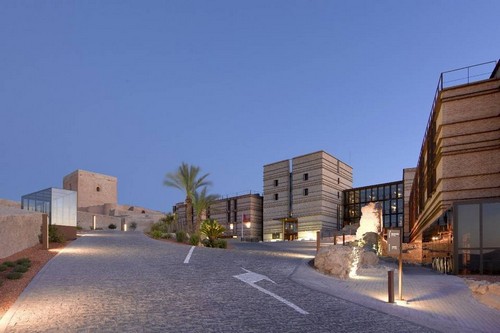Find your perfect Villamartin holiday rental home in the Costa Blanca through In The Sun Holidays offering beautiful beach front villas overlooking the Mediterranean, spacious apartments and homes suiting all holiday requirements and the best place to call your holiday home in Villamartin, that is what In The Sun Holidays of Villamartin will guarantee you when choosing your holiday destination, just ask a friend as we are sure they have been here already!
The Castle of Lorca is a medieval stronghold in Murcia, Spain, that was constructed between the 9th and 15th centuries. It has a number of defensive features that helped to make the city and its citadel into an unassailable position in the southeast of the peninsula during the Middle Ages. The battles between Christians and Muslims on the frontier of Granada were fought out of the castle of Lorca. It is contained within the boundaries of the historical-artistic complex of Lorca and is recognized as an Asset of Cultural Interest
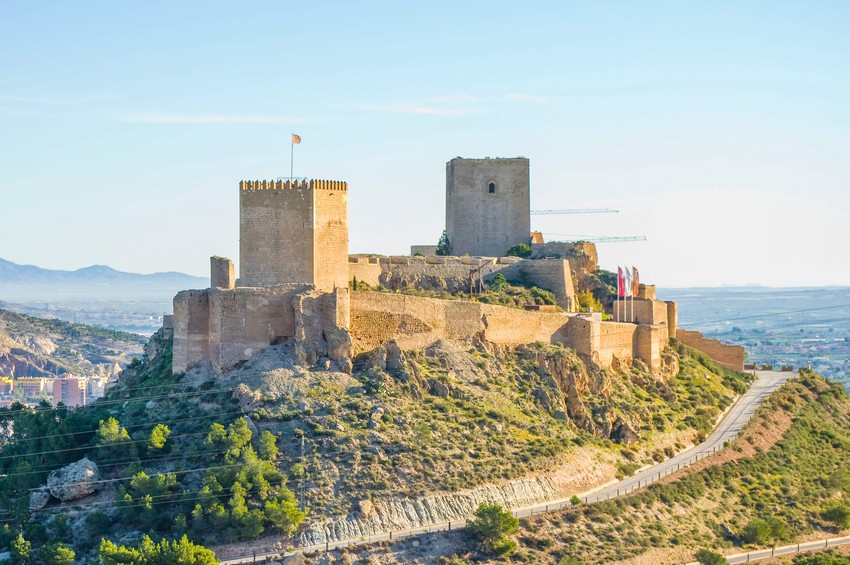
It is one of the largest castles in Spain due to its extension, which is 640 meters long and around 120 meters wide at its widest point.
History Of The Castle
The archaeological study done on various periods inside the castle shows that the hill upon which it is built has been continuously inhabited since the Chalcolithic. Archaeological investigations conducted there between 1999 and 2001, as well as those conducted on several lots in the city, revealed the presence of a sizable Argaric settlement (Bronze Age) that spread beneath the castle and the modern city of Lorca. Burials, homes, and even the wall's foundation that protected the supposed Argaric town beneath the present-day city's urban area were found.
Once the Bronze Age wall has been identified, it is exceedingly challenging to make an educated approximation as to when a defensive bastion initially stood on the Castle hill. The first documented accounts of a castle on Lorca Hill came from Muslim texts that identify Lurqa as one of the most significant cities in the Cora de Tudmir as early as the ninth century AD.
The Castle of Lorca is a medieval stronghold in Murcia, Spain, that was constructed between the 9th and 15th centuries. It has a number of defensive features that helped to make the city and its citadel into an unassailable position in the southeast of the peninsula during the Middle Ages. The battles between Christians and Muslims on the frontier of Granada were fought out of the castle of Lorca. It is contained within the boundaries of the historical-artistic complex of Lorca and is recognized as an Asset of Cultural Interest.
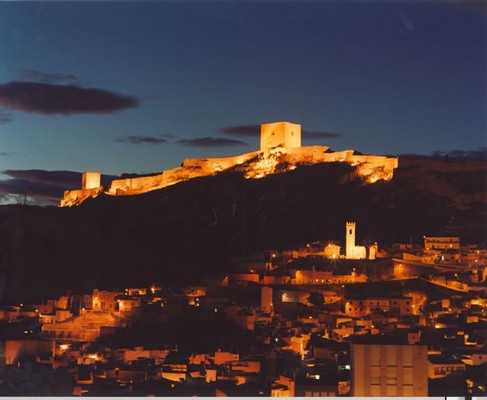
It is one of the largest castles in Spain due to its extension, which is 640 meters long and around 120 meters wide at its widest point.
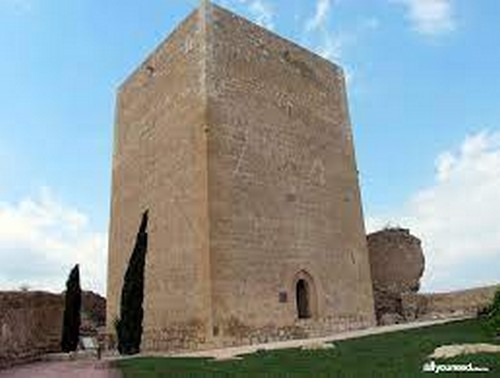
The Castilian monarchs were compelled to rebuild the area's population and construct and maintain the best castle fortifications because of this fortunate situation. Alfonso X directed as follows:
...for knowing that I have to populate the Alcaçares and the town of Lorca with Christians that I won from the Moors... and because there are more and more than I give to all the Christian Vezinos and residents in the Alcaçares and in the town of Lorca [...] older houses and populated with their bodies [...] all things forever and ever
Alfonso X will also be the one to give the go-ahead for the construction of the Alfonsina, Espolón, and Guillén Pérez de Pina towers, which are currently missing, as well as for the fortification of the castle walls and the reconstruction of any damaged ones. Only the wall of Espaldón and a few of the existing walls' foundations are the only remaining signs of the Muslim stronghold because the Christian intervention was so extensive.
The Alcalá neighborhood inside the castle saw new inhabitants after the Castilian conquest. The Jewish Quarter of Lorca, which has its roots in the fourteenth century, was exposed by the efforts of the Parador de Nacional de Turismo.
Lorca's Jewish Neighborhood and Synagogue
Medieval Lorca's Jewish neighborhood was situated inside the citadel, cut off from the rest of the city by its walls. In order to protect the Jews, the neighborhoods were physically divided, but this resulted in a blatant ethnic division of the Lorca community, with the Christians living in the lower part of the city and the Jews in the most outlying area. The Jewish neighborhood was populated up until the Jews were driven out of Spain in 1492, after which it remained empty.
The ruins of Lorca's Jewish neighborhood cover a space of around 5,700 square meters. Excavations have been conducted on a total of 12 homes, including the only synagogue ever discovered in the Region of Murcia. The Luces de Sefarad museum and the basement of the Parador de Turismo both house archaeological relics that can be seen.
The streets are divided into four terraces with a somewhat erratic layout that follows the land's slope. The homes are arranged around the synagogue, which is in the center. These have a rectangular layout with numerous divided rooms. They feature higher bedrooms, and it's usual to see kitchens, water jars, cupboards, and shelves connected to the walls.
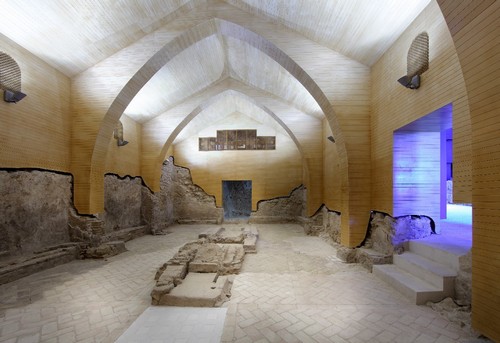
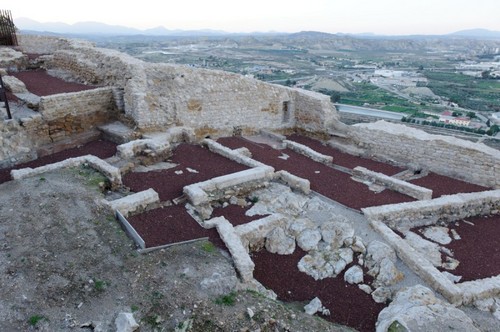
The Lorca Synagogue serves as the complex's main structural component. It is partially excavated into the earth to add height inside while blending in with the surrounding structures on the outside. It complies with the legislation in effect at the time in this fashion. While the women's gallery has a separate exterior entrance, the building is approached by a patio on which two access apertures are located. The niche (hejal) in the prayer room's interior, which was embellished with Gothic-style plasterwork, still serves as the repository for the Torah scrolls. The bimá, a platform used for reading the Torah, is still visible in its original form. The men sat on a continuous bench that ran the length of the prayer room. Similar to other synagogues, Lorca featured a matroneum for women, which was situated above the vestibule.
15th to 18th Centuries
The value of the Castle of Lorca greatly diminished with the disappearance of the boundary following the conquest of the present-day province of Almera in 1488 and that of Granada in 1492. The castle was now far too large for the small garrison that had been sent to guard it. The final inhabitants of the Jewish quarter likewise vanished along with the Jews who were ordered to be expelled by the Catholic Monarchs, effectively depopulating the Alcalá district. The urban center of Lorca moved farther away from the Castle as a result of the increased level of security that prevailed.
The fortress, which by the 18th century even threatened ruin in many of its parts, was ultimately completely abandoned as a result of this entire process.
Nineteenth Century
The fortress will be renovated in the start of the 19th century because of the War of Independence from Spain. Many of its dependencies and walls will be repaired, but in certain cases, like with the battery that was constructed to use artillery to bombard the Murviedro region or the stables below it, modifications will be performed that will radically alter the structure's medieval appearance.
Twenty-First Century
The Lorca castle, particularly its Alfonsina tower, was designated a National Historic Monument on June 4, 1931. The Fortress and the Old Town of Lorca were both designated as Historic-Artistic Sites on March 5, 1964.
Earthquake in 2011
The Torre del Espolón and the castle wall of Lorca were severely destroyed. It continued to operate with its summer program, night visits, etc. despite the devastation.
Alpónsina Tower
King Alfonso X, who overthrew the city of Lorca in 1244, is credited with ordering the construction of the Alfonsina Tower, which bears his name. It was built on the foundations of another Islamic tower of smaller dimensions that had been demolished for its construction at the top of the castle hill.
The tower measures 22.70 by 19.40 meters and has a rectangular shape. It can virtually reach a height of 30 meters because to its walls' impressive 4 meter thickness. The structure has three stories and a terrace that may be reached by stairs that go inside the wall and turn at the building's corners. The building is supported by a sizable central pillar that is 6.25 meters long and 3.25 meters broad.
The vault is composed of masonry and covers the floors. There are eight rhomboid vault panels on each floor, which is around 8 meters tall and resolves as pendentives in its corners.
Eight arrow slits in each of the first two stories are used to illuminate them. Four huge windows on the third story are constructed of an alfiz, a large pointed arch, and an intrados that is doubled by a smaller, more recessed arch.
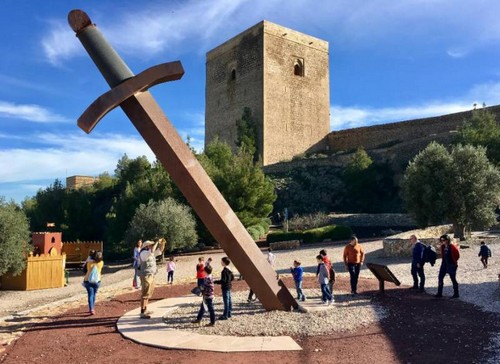
The Ram Tower
The castle's westernmost point is where the tower is situated. The identical stonework marks in both projects show that it was built concurrently with its sister, the Alfonsina Tower. The building is 13 meters square on each side. It has a basement cistern, a terrace with crenellations, and two storeys separated by brick ribbed vaults with stone ribs. Similar to the Alfonsina Tower, a stairway built into the wall that round the building's corners serves as the method of transportation between the various levels. Arrow slits provide the lighting for the interior.
Following the earthquake that struck the town of Lorca in May 2011, the tower sustained significant damage. According to the architect director of the works, Francisco Jurado, it has already undergone restoration since the beginning of 2012, changing its appearance by keeping the battlements that distinguished it because there is "lack of historical evidence of its existence."
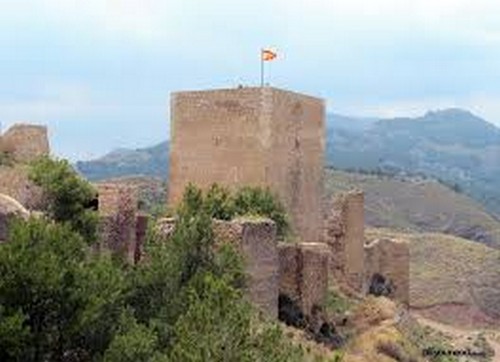
The "Lorca Workshop of Time"
The trademark of Lorca's cultural tourism is Lorca Taller del Tiempo. LORCATUR, Lorca Taller del Tiempo, SAU is the organization in charge of running the walled complex of the Castle of Lorca as a heritage theme park. Throughout the year, a variety of leisure activities are planned, including workshops, falconry, dramatized visits, guided tours, nighttime events, etc.
In addition, the Taller del Tiempo initiative features a tourist train that travels through the city and departs from the visitor center, the former La Merced Convent, and the starting point of the themed route. Additionally, it arranges routes through the city and municipality. The final route that stems from the earthquake of May 11, 2011, is called "Lorca, Open for Restoration," where you may take an official tour guide to view firsthand how historic buildings that were destroyed by the earthquake are being restored.
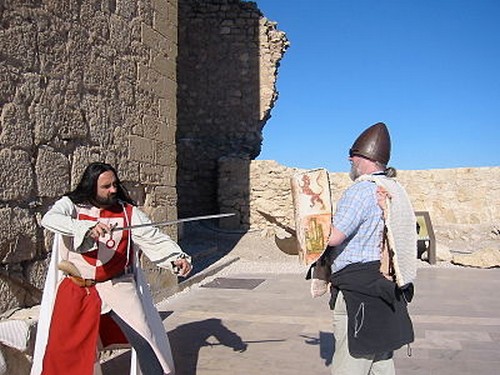
Paradise for Tourists
The Parador de Turismo de Lorca is situated inside the castle's walls. 6 Nine suites are among its 67 rooms.
Archaeological digs were conducted over a three-year period in conjunction with its construction, resulting in the discovery of a synagogue and a Jewish neighborhood. 8 Despite the discoveries, work continued on altering the Parador project to include the discovered ruins. The scientific community as a whole opposed the projects inside the walled perimeter.
The Parador would be completed by 2010, said Francisco Jódar, the mayor of Lorca. The hotel installation was being worked on when Joan Mesquida, the secretary of state for tourism, visited on July 22, 2010, and that date was set as the inauguration date for the second semester of 2011. However, the Lorca earthquake damaged the construction, creating the final delay in a hostel that was scheduled to open at the conclusion of 2007 9 but didn't until it was officially opened on July 12, 2012, by Queen Sofia.
